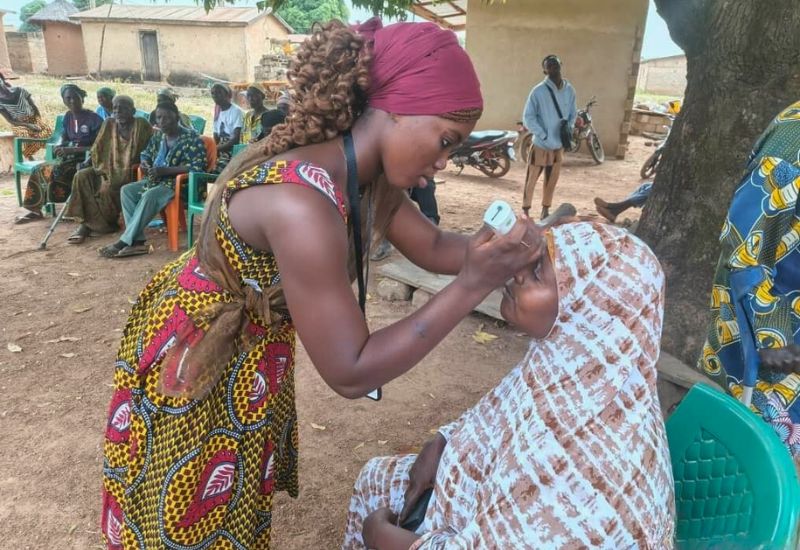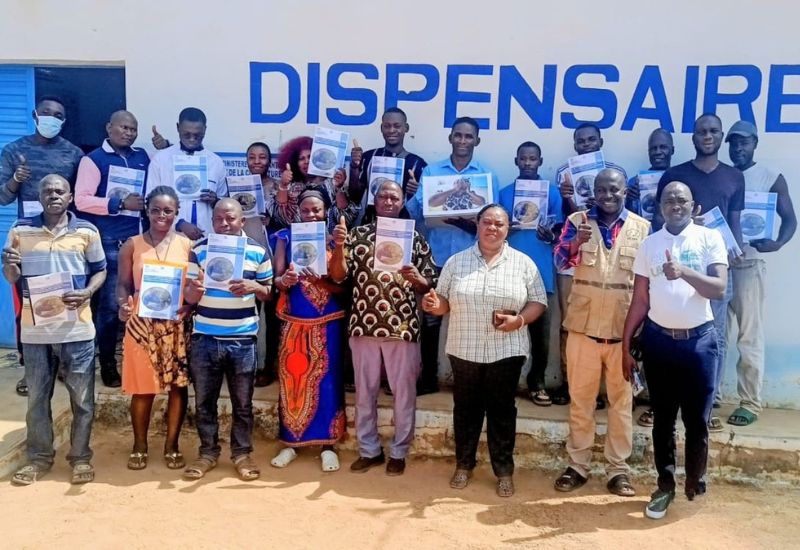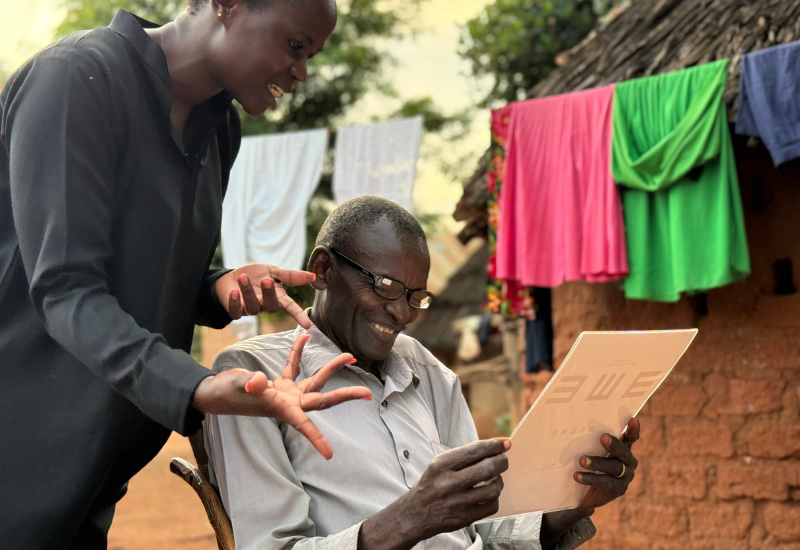The dynamic nature of many global health challenges demands adaptation. Openness to learning allows governments and their partners to adapt approaches and scale successful interventions for more effective responses to evolving challenges.
So, what does it take to make government-led health programming in low- and middle-income countries effective from urban to remote rural regions? Join us as we share the adaptations we made to the first of its kind school eye health program in Liberia.
EYElliance and LV Prasad Eye Institute, among other partners, have been supporting the government-led school eye health program in Liberia since 2017, providing vision screening, dispensing eyeglasses and touching the lives of over 143,000 students and teachers. Partnering with the Liberian Ministries of Education and Health, in-country NGOs, local service providers, and funders—the program has reached 10 out of Liberia’s 15 counties with plans to scale nationally.

We’ve worked alongside Ministry partners to learn and make adaptations to the program model. These provide an opportunity to glean universally applicable adaptations for sustainable government-led health programs. Here are some of our learnings:
1. Positioning district and county teams to lead
A pivotal learning is the importance of empowering county and district teams to take the lead. Institutionalizing at the local government level is also important for long term sustainability.
In the past, national level teams were responsible for leadership, coordination and monitoring of all school eye health activities, even in remote counties. This was extremely resource- and time-intensive, removing staff from their posts in the capital city, Monrovia, for a week or more at a time, while incurring long-distance travel expenses. The approach didn’t fully leverage the teams who were trained to oversee the program at the district and county levels and already knew the schools and communities where the program would be implemented.
Following joint strategy discussions, the Ministry and partners identified that shifting the responsibility of leadership and monitoring from the national team to local teams could be a promising approach. Teacher Training, School-based Screening, and OT Clusters (Steps 5-7) are now being entirely coordinated and overseen by the local teams, with remote monitoring and support from the national team.
This ensures a more nuanced understanding of the community's needs, realizes cost savings, and fosters greater ownership among those directly involved in program implementation. We’re already seeing the benefits of this adaptation, with a high level of engagement and leadership amongst District Education Officers in remote Lofa county.
2. Making school eye health a normal part of student life
Alignment with the school year is an important adaptation that institutionalizes the school eye health program, integrating it as part of the standard registration and orientation processes at the beginning of each academic year. By synchronizing with the school year's commencement, the program maximizes student attendance—as student attrition increases as the year goes on.
Historically, school eye health activities were not consistently synchronised with the national academic calendar. Occasionally, this would mean overlaps with exam schedules, holiday breaks, or other activities that made coordination difficult and meant that the program was not reaching as many students as possible due to lower attendance.
3. Accurate data is the bedrock of impactful programs
In EYElliance and LV Prasad Eye Institute-supported counties, school eye health data flows from schools to District Education Officers, to County Education Officers, and then to the national Ministry of Education. The data flow from schools through to county level uses standardized reporting tools approved for the program. However, at the national level, data was often compiled and reported in different formats, and delays in receiving data made it difficult to track impact across counties—and even within counties.

In consultation with the Ministry of Education, EYElliance is testing a simple approach for addressing this challenge by introducing a standardized data collection template for use at national level, which aligns with existing school eye health monitoring tools. Additionally, aligning program activities with the beginning of the school year should help to ensure that we obtain the most accurate enrollment data, which is foundational for assessing the impact of the program.
4. Rethinking social mobilization tactics
Social mobilization is critical to the success of the school eye health program in Liberia. Gaining parent and community buy-in ensures children are encouraged and supported to attend vision screening and eye exams.
Traditionally, social mobilization efforts rely on in-country partners or international nonprofits, which often engage expensive marketing agencies to execute campaigns. Recognizing the necessity for a more sustainable approach, we collaborated with our Ministry partners to explore a more cost-effective and sustainable solution.
The Liberian Ministry of Education identified radio due to its widespread accessibility, particularly in rural areas and produced radio jingles locally in both English and local dialects. The jingles were created through a collaboration between two divisions in the Ministry of Education that hadn’t previously worked together on school eye health: the School Health Division and the Communications Division. This approach signifies the Ministry's commitment to sustaining the impact of the school eye health program beyond our direct involvement. Listen to the jingle here (with closed captions):
EYElliance's journey alongside the Liberian Ministries of Education and Health speaks to the necessity of adaptability that considers local needs and prioritizes government leadership. By embracing challenges as opportunities to innovate, we have not only enhanced the vision of Liberia’s youth but also begun to further iterate on a sustainable model for school eye health programs beyond the borders of Liberia.
Stay tuned as we continue to test and refine these adaptations. We’ll bring you updated best practice learnings in early 2024 as our work in Liberia continues to evolve.






.jpg)
